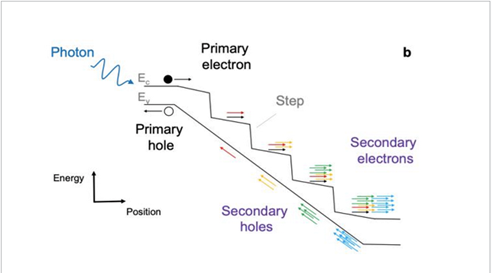
Ultra-sensitive light detector provides a jolt to self-driving tech
The potential of self-driving cars rests on technology that rapidly senses and reacts to obstacles and other vehicles in real time. Engineers from The University of Texas at Austin and the University of Virginia created a new first-of-its-kind light-detecting device that more accurately amplifies weak signals bouncing off of faraway objects than current technology allows. Autonomous vehicles receive a fuller picture of what’s happening on the road.
The new device has improved sensitivity over other light detectors as it also eliminates inconsistency, or noise, associated with the detection process. Boise can cause systems to miss signals and put autonomous vehicle passengers at risk.
Researchers globally are working on devices, known as avalanche photodiodes, to meet these needs. The new device stands out with its staircase-like alignment. It includes physical steps in energy that electrons roll down, multiplying along the way and creating a stronger electrical current for light detection as they go.
In this new discovery, detailed in Nature Photonics, they’ve shown, for the first time, a staircase avalanche photodiode with multiple steps. The new pixel-sized device is ideal for Light Detection and Ranging (Lidar) receivers, which require high-resolution sensors that detect optical signals reflected from distant objects.
Adding steps increases sensitivity and consistency of the device. And the consistent multiplication of electrons with each step makes the electrical signals from the detector more dependable, even in low light conditions.
In the 1980s, inventor Federico Capasso first conceived of the avalanche photodiode technology the researchers have been studying. But the tools and techniques to make it a reality just weren’t far enough along. The science behind the breakthrough comes in a new way of growing materials, Bank said. Instead of growing materials with randomly distributed atoms, they created layered alloys composed of binary compounds, those made up of two elements, stacked on top of each other.
Another important piece of this device is that it can operate at room temperature. Today, the most sensitive light detectors need to be kept at temperatures hundreds of degrees below zero, making them too expensive and impractical for applications such as lidar.
Original Release: Eureka Alert
